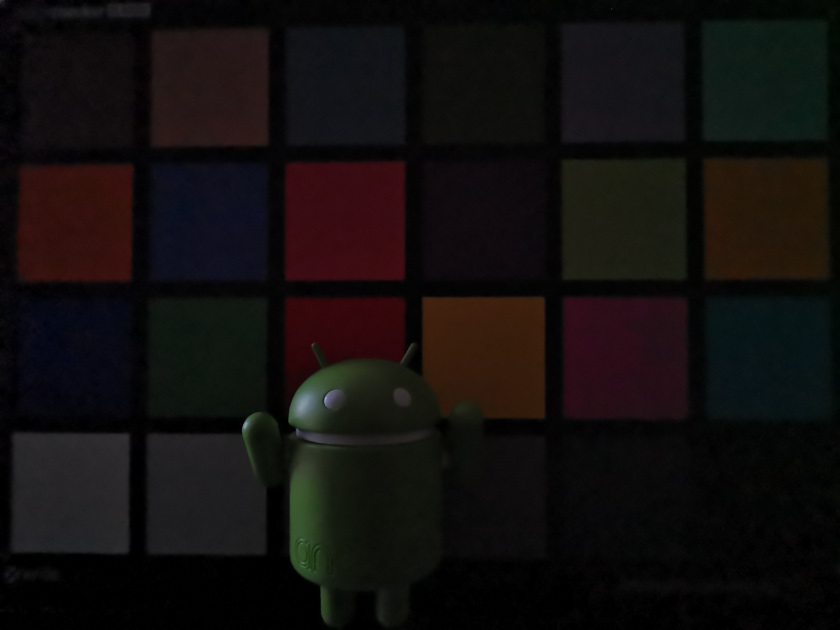 The Huawei Mate 20 Pro may be a contender for best smartphone of the year, but its 1,049-euro (~$1,217) price is certainly eye watering. The regular Huawei Mate 20 starts at just 799 euros (~$927), which is still expensive but perhaps more in-line with that consumers are used to paying for very high-end smartphones.
A 250-euro difference is nothing to sneeze at, but are there really any major downsides by opting for Huawei’s slightly more affordable new flagship smartphone?
A few hardware differences
As you would expect, there are a number of internal hardware tweaks between the Mate 20 and Mate 20 Pro, along with a few exterior changes.
Performance wise, both smartphones boast the same 7nm Kirin 980 processing chip, which is built on the most cutting-edge SoC manufacturing technology on the market right now. RAM options of 4 or 6GB are plenty good enough for a top-notch experience, and both models also come with 128GB of internal storage, with Huawei’s nano-memory SIM slot for extra storage. Both phones perform right at the top of the market, having no problems pleasing multi-taskers and gamers alike.
Huawei Mate 20 ProHuawei Mate 20
Display6.39-inch curved OLED
3,120 x 1,440 resolution
545 ppi
19.5:9 aspect ratio6.53-inch FHD+ LCD
2,160 x 1,080 resolution
402 ppi
18.7:9 aspect ratio
ProcessorHuawei Kirin 980
Octa-core CPU (2 @ 2.6GHz, 2 @ 1.92GHz, 4 @ 1.8GHz)
Dual NPUHuawei Kirin 980
Octa-core CPU (2 @ 2.6GHz, 2 @ 1.92GHz, 4 @ 1.8GHz)
Dual NPU
GPUMali-G76 720MHzMali-G76 720MHz
RAM6GB4/6GB
Storage128GB
NM (nano memory) card slot for memory expansion128GB
NM (nano memory) card slot for memory expansion
Battery4,200mAh
40W Huawei Supercharge
Can be used as a wireless charger for other Qi-enabled devices
15W wireless charging4,000mAh
22.5W Huawei Supercharge
CamerasRear:
Main: 40MP sensor, f/1.8 aperture
Second: 8MP 3x telephoto sensor, OIS, f/2.4 aperture
Third: 20MP ultra-wide sensor, f/2.2 aperture, 16mm focal length equivalent
Front: 24MP RGB sensorRear:
Main: 12MP sensor, f/1.8 aperture
Second: 8MP 2x telephoto sensor, OIS, f/2.4 aperture
Third: 16MP ultra-wide sensor, f/2.2 aperture, 16mm focal length equivalent
Front: 24MP RGB sensor
Biometric securityIn-display fingerprint sensor
Dot projector, TOF proximity sensor, flood illuminator, and an IR camera for face-unlockRear-facing fingerprint sensor
Headphone jackNoYes
Dimensions157.8 x 72.3 x 8.6mm
189g158.2 x 77.2 x 8.3mm
188g
IP ratingIP68IP53
Software versionAndroid 9.0 Pie with EMUI 9.0Android 9.0 Pie with EMUI 9.0
ColorsPink Gold, Midnight Blue, Emerald Green, Twilight, BlackPink Gold, Midnight Blue, Emerald Green, Twilight, Black
There are more meaningful differences when it comes to their displays. The Mate 20 Pro offers a curved OLED panel with a higher 3,120 x 1,440 resolution versus a FHD+ LCD panel. The resolution difference isn’t so much of a drawback, but the curved panel makes the Mate 20 Pro a bit more attractive, and importantly, thinner and easier to hold than the larger regular Mate 20. The OLED panel’s colors pop with a little extra saturation while the LCD panel is brighter outdoors but has a slightly warmer tint to it.
The Mate 20 is also missing the Pro’s in-display fingerprint scanner, opting for a scanner on the back below the camera instead. The smaller notch means less sophisticated face unlocking technology too, but it still works unbelievably quickly. The Mate 20 features a 4,000mAh battery, while the Mate 20 Pro hits 4,200mAh. Both feature fast wireless charging at 15W, but only the Pro can also charge other Qi-enabled devices via reverse wireless charging.
There is a win for the regular Mate 20 though. It features a headphone jack, while the Pro relies on a USB Type-C port or Bluetooth — potentially a deciding factor if you have a decent pair of wired headphones lying around. Overall, the Mate 20 Pro packs in a few nice extras, but the key specifications are pretty much a match.
The Mate 20 Pro offers a higher res curved screen, in-display fingerprint scanner, better IP rating, and a more powerful camera setup
The Huawei Mate 20 Pro may be a contender for best smartphone of the year, but its 1,049-euro (~$1,217) price is certainly eye watering. The regular Huawei Mate 20 starts at just 799 euros (~$927), which is still expensive but perhaps more in-line with that consumers are used to paying for very high-end smartphones.
A 250-euro difference is nothing to sneeze at, but are there really any major downsides by opting for Huawei’s slightly more affordable new flagship smartphone?
A few hardware differences
As you would expect, there are a number of internal hardware tweaks between the Mate 20 and Mate 20 Pro, along with a few exterior changes.
Performance wise, both smartphones boast the same 7nm Kirin 980 processing chip, which is built on the most cutting-edge SoC manufacturing technology on the market right now. RAM options of 4 or 6GB are plenty good enough for a top-notch experience, and both models also come with 128GB of internal storage, with Huawei’s nano-memory SIM slot for extra storage. Both phones perform right at the top of the market, having no problems pleasing multi-taskers and gamers alike.
Huawei Mate 20 ProHuawei Mate 20
Display6.39-inch curved OLED
3,120 x 1,440 resolution
545 ppi
19.5:9 aspect ratio6.53-inch FHD+ LCD
2,160 x 1,080 resolution
402 ppi
18.7:9 aspect ratio
ProcessorHuawei Kirin 980
Octa-core CPU (2 @ 2.6GHz, 2 @ 1.92GHz, 4 @ 1.8GHz)
Dual NPUHuawei Kirin 980
Octa-core CPU (2 @ 2.6GHz, 2 @ 1.92GHz, 4 @ 1.8GHz)
Dual NPU
GPUMali-G76 720MHzMali-G76 720MHz
RAM6GB4/6GB
Storage128GB
NM (nano memory) card slot for memory expansion128GB
NM (nano memory) card slot for memory expansion
Battery4,200mAh
40W Huawei Supercharge
Can be used as a wireless charger for other Qi-enabled devices
15W wireless charging4,000mAh
22.5W Huawei Supercharge
CamerasRear:
Main: 40MP sensor, f/1.8 aperture
Second: 8MP 3x telephoto sensor, OIS, f/2.4 aperture
Third: 20MP ultra-wide sensor, f/2.2 aperture, 16mm focal length equivalent
Front: 24MP RGB sensorRear:
Main: 12MP sensor, f/1.8 aperture
Second: 8MP 2x telephoto sensor, OIS, f/2.4 aperture
Third: 16MP ultra-wide sensor, f/2.2 aperture, 16mm focal length equivalent
Front: 24MP RGB sensor
Biometric securityIn-display fingerprint sensor
Dot projector, TOF proximity sensor, flood illuminator, and an IR camera for face-unlockRear-facing fingerprint sensor
Headphone jackNoYes
Dimensions157.8 x 72.3 x 8.6mm
189g158.2 x 77.2 x 8.3mm
188g
IP ratingIP68IP53
Software versionAndroid 9.0 Pie with EMUI 9.0Android 9.0 Pie with EMUI 9.0
ColorsPink Gold, Midnight Blue, Emerald Green, Twilight, BlackPink Gold, Midnight Blue, Emerald Green, Twilight, Black
There are more meaningful differences when it comes to their displays. The Mate 20 Pro offers a curved OLED panel with a higher 3,120 x 1,440 resolution versus a FHD+ LCD panel. The resolution difference isn’t so much of a drawback, but the curved panel makes the Mate 20 Pro a bit more attractive, and importantly, thinner and easier to hold than the larger regular Mate 20. The OLED panel’s colors pop with a little extra saturation while the LCD panel is brighter outdoors but has a slightly warmer tint to it.
The Mate 20 is also missing the Pro’s in-display fingerprint scanner, opting for a scanner on the back below the camera instead. The smaller notch means less sophisticated face unlocking technology too, but it still works unbelievably quickly. The Mate 20 features a 4,000mAh battery, while the Mate 20 Pro hits 4,200mAh. Both feature fast wireless charging at 15W, but only the Pro can also charge other Qi-enabled devices via reverse wireless charging.
There is a win for the regular Mate 20 though. It features a headphone jack, while the Pro relies on a USB Type-C port or Bluetooth — potentially a deciding factor if you have a decent pair of wired headphones lying around. Overall, the Mate 20 Pro packs in a few nice extras, but the key specifications are pretty much a match.
The Mate 20 Pro offers a higher res curved screen, in-display fingerprint scanner, better IP rating, and a more powerful camera setup
 Hands-on
Enough about the specifications, it’s using the phones that counts. While most of the experience is the same, these feel like two quite different phones in a few ways.
Handling is the first major difference. The Mate 20’s display is larger and noticeably wider than the Pro. It feels like a big phablet like the Mate 10. The Pro model handles more like a Galaxy S or Note. It’s a big enough difference that I can’t quite comfortably use the Mate 20 in one hand. However, if you’re after something with a bigger screen feel, this could work out well for you.
After using the phones for a while, I eventually gave up on the Mate 20 Pro’s in display fingerprint scanner. It works, but it’s not as fast or forgiving as traditional implementations, including the scanner on the back of the Mate 20. It’s certainly cool, but it’s not a feature I would buy the Pro for. Face unlocking is more convenient, works more consistently, and is even faster. The added 3D nature of the Pro’s facial scanning technology makes it more secure too.
The regular Mate 20 looks and feels like a traditional Mate model, while the Pro is closer to Samsung's Galaxy
Besides the aesthetic and feature differences, my day-to-day use of the two handsets feels very similar. I spend too much time reading articles online, watching the odd YouTube video, and maybe clocking in a game or two if I have time. Both of these handsets handle my use as well as I could hope — the Kirin 980’s performance is great.
Battery life hasn’t been a problem either. Both phones last a full day and more, and offer speedy SuperCharge top-ups if you need them. The Mate 20 Pro’s 40W charging capability can get the phone from zero to full in just an hour, although both phones can get back on their feet after just 30 minutes plugged in. You really don’t have to worry about battery life with Huawei’s latest handsets.
There isn’t a lot to say about software. Both run Huawei’s latest EMUI 9, based on Android 9.0 Pie, and neither stuttered with any app I threw at them. It’s Huawei’s best effort to streamline EMUI yet and I really don’t have any complaints about it — other than having to manually enable the app drawer. Fortunately, searchable settings help to navigate that particular problem. The software experience is basically the same between the two, apart from the notification overflow that occurs thanks to the Pro’s larger notch.
Hands-on
Enough about the specifications, it’s using the phones that counts. While most of the experience is the same, these feel like two quite different phones in a few ways.
Handling is the first major difference. The Mate 20’s display is larger and noticeably wider than the Pro. It feels like a big phablet like the Mate 10. The Pro model handles more like a Galaxy S or Note. It’s a big enough difference that I can’t quite comfortably use the Mate 20 in one hand. However, if you’re after something with a bigger screen feel, this could work out well for you.
After using the phones for a while, I eventually gave up on the Mate 20 Pro’s in display fingerprint scanner. It works, but it’s not as fast or forgiving as traditional implementations, including the scanner on the back of the Mate 20. It’s certainly cool, but it’s not a feature I would buy the Pro for. Face unlocking is more convenient, works more consistently, and is even faster. The added 3D nature of the Pro’s facial scanning technology makes it more secure too.
The regular Mate 20 looks and feels like a traditional Mate model, while the Pro is closer to Samsung's Galaxy
Besides the aesthetic and feature differences, my day-to-day use of the two handsets feels very similar. I spend too much time reading articles online, watching the odd YouTube video, and maybe clocking in a game or two if I have time. Both of these handsets handle my use as well as I could hope — the Kirin 980’s performance is great.
Battery life hasn’t been a problem either. Both phones last a full day and more, and offer speedy SuperCharge top-ups if you need them. The Mate 20 Pro’s 40W charging capability can get the phone from zero to full in just an hour, although both phones can get back on their feet after just 30 minutes plugged in. You really don’t have to worry about battery life with Huawei’s latest handsets.
There isn’t a lot to say about software. Both run Huawei’s latest EMUI 9, based on Android 9.0 Pie, and neither stuttered with any app I threw at them. It’s Huawei’s best effort to streamline EMUI yet and I really don’t have any complaints about it — other than having to manually enable the app drawer. Fortunately, searchable settings help to navigate that particular problem. The software experience is basically the same between the two, apart from the notification overflow that occurs thanks to the Pro’s larger notch.
 A bigger difference is in the camera
The camera is a bigger area of differentiation between the two Huawei Mate 20 phones. Although both house a triple camera setup, the Pro offers a much higher resolution 40MP main sensor and a telephoto lens that extends a lossless zoom up to 3x. The regular Mate 20’s main camera is a 12MP affair, accompanied by a 16MP rather than 20MP wide angle lens, and an 8MP telephoto lens (offering just a 2x lossless zoom).
There isn’t a huge amount to tell between camera samples taken at full frame. Color grading and saturation are slightly different between the two, most likely owing to the different sensors and lenses. The telephoto and main sensor photos come out very well, although both of the wide-angle cameras look significantly less detailed than their resolutions suggest. The extra width helps sometimes, but you’ll want to stick the main camera for most shots.
A bigger difference is in the camera
The camera is a bigger area of differentiation between the two Huawei Mate 20 phones. Although both house a triple camera setup, the Pro offers a much higher resolution 40MP main sensor and a telephoto lens that extends a lossless zoom up to 3x. The regular Mate 20’s main camera is a 12MP affair, accompanied by a 16MP rather than 20MP wide angle lens, and an 8MP telephoto lens (offering just a 2x lossless zoom).
There isn’t a huge amount to tell between camera samples taken at full frame. Color grading and saturation are slightly different between the two, most likely owing to the different sensors and lenses. The telephoto and main sensor photos come out very well, although both of the wide-angle cameras look significantly less detailed than their resolutions suggest. The extra width helps sometimes, but you’ll want to stick the main camera for most shots.
 Huawei Mate 20 Pro 10MP
Huawei Mate 20 12MP
Huawei Mate 20 Pro 10MP
Huawei Mate 20 12MP

 Huawei Mate 20 Pro wide angle
Huawei Mate 20 wide angle
Huawei Mate 20 Pro wide angle
Huawei Mate 20 wide angle
 Bigger differences between the cameras become apparent when zooming in and when taking pictures in low light. The 3x zoom obviously extends farther than 2x, resulting in some extra detail capture at a distance. In low light, the Mate 20 Pro’s 40MP camera can be switched into a 10MP resolution with larger 2.0um sized pixels for much better light capture. The end result is better exposure and less noise in dark shots with the Pro model, and greater shooting flexibility with 40MP pictures in good lighting.
Bigger differences between the cameras become apparent when zooming in and when taking pictures in low light. The 3x zoom obviously extends farther than 2x, resulting in some extra detail capture at a distance. In low light, the Mate 20 Pro’s 40MP camera can be switched into a 10MP resolution with larger 2.0um sized pixels for much better light capture. The end result is better exposure and less noise in dark shots with the Pro model, and greater shooting flexibility with 40MP pictures in good lighting.
 Huawei Mate 20 Pro 3x zoom crop
Huawei Mate 20 2x zoom crop
Huawei Mate 20 Pro 3x zoom crop
Huawei Mate 20 2x zoom crop

 Huawei Mate 20 Pro low light
Huawei Mate 20 low light
Huawei Mate 20 Pro low light
Huawei Mate 20 low light
 The hardware differences manifest in different quality outputs, and the Mate 20 Pro has a clear lead. Fortunately, the two cameras share the same software features. There’s Hybrid Zoom technology for a decent lossy zoom all the way up to 5X, Night Mode for impressive low light pictures if you can hold the camera still, AI color saturation boost if you like that sort of thing, document scanning, Light Painting, manual shooting options, and 3D panoramas.
The hardware differences manifest in different quality outputs, and the Mate 20 Pro has a clear lead. Fortunately, the two cameras share the same software features. There’s Hybrid Zoom technology for a decent lossy zoom all the way up to 5X, Night Mode for impressive low light pictures if you can hold the camera still, AI color saturation boost if you like that sort of thing, document scanning, Light Painting, manual shooting options, and 3D panoramas.
 Two kinds of premium experience
Despite the shared name, these are two pretty different phones. One is a real next-generation flagship, the other an excellent successor to the already beloved Mate 10. Personally, I can live without the in-display fingerprint scanner, 3D facial recognition, and reverse wireless charging, to save a wad of cash. The Pro is really designed for those looking to spend big on a flashy flagship. The Huawei Mate 20 feels more like a traditional big phablet.
If you’re looking for a phone with a great camera, pick the Pro over the regular Mate 20. Although both phones are highly flexible, the Pro produces better-looking shots and is superior in low light. The regular model is a fine shooter, but its triple camera isn’t as impressive as the 40MP combo packed inside the Pro model.
The Mate 20 is priced below the Samsung Galaxy Note 9, while the Mate 20 Pro is more expensive, and that feels about right. The Pro name is apt, it’s a step above and beyond the key flagship requirements and offers all the bells and whistles. It’s a glimpse into the future. The regular Mate 20 makes a few compromises, but nails the key specifications most consumers would want in a big flagship to justify its price. Either is a good buy, it just depends what you want from your smartphone.
Two kinds of premium experience
Despite the shared name, these are two pretty different phones. One is a real next-generation flagship, the other an excellent successor to the already beloved Mate 10. Personally, I can live without the in-display fingerprint scanner, 3D facial recognition, and reverse wireless charging, to save a wad of cash. The Pro is really designed for those looking to spend big on a flashy flagship. The Huawei Mate 20 feels more like a traditional big phablet.
If you’re looking for a phone with a great camera, pick the Pro over the regular Mate 20. Although both phones are highly flexible, the Pro produces better-looking shots and is superior in low light. The regular model is a fine shooter, but its triple camera isn’t as impressive as the 40MP combo packed inside the Pro model.
The Mate 20 is priced below the Samsung Galaxy Note 9, while the Mate 20 Pro is more expensive, and that feels about right. The Pro name is apt, it’s a step above and beyond the key flagship requirements and offers all the bells and whistles. It’s a glimpse into the future. The regular Mate 20 makes a few compromises, but nails the key specifications most consumers would want in a big flagship to justify its price. Either is a good buy, it just depends what you want from your smartphone.
source: https://www.androidauthority.com/huawei-mate-20-vs-mate-20-pro-925517/
date: Wed, 21 Nov 2018 05:56:49 +0000
Comments
Post a Comment